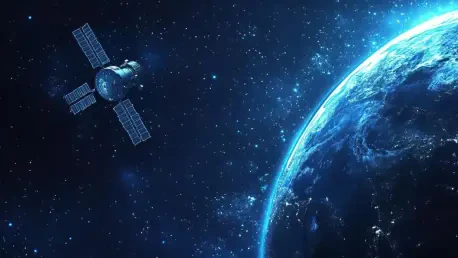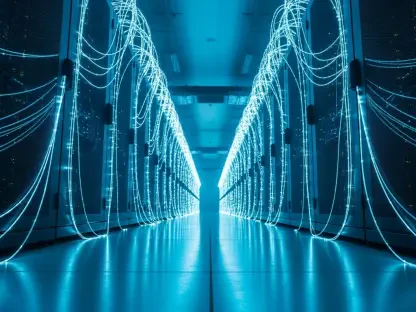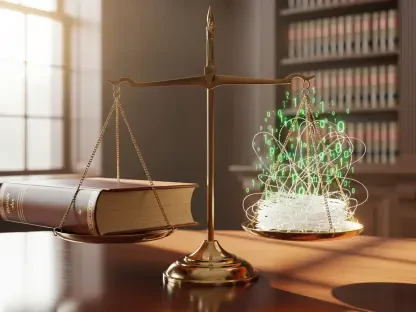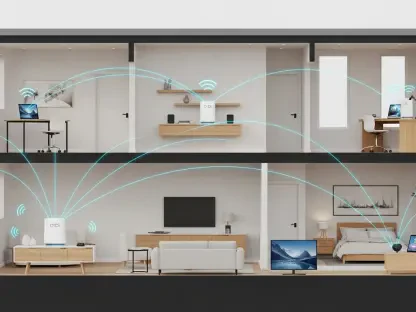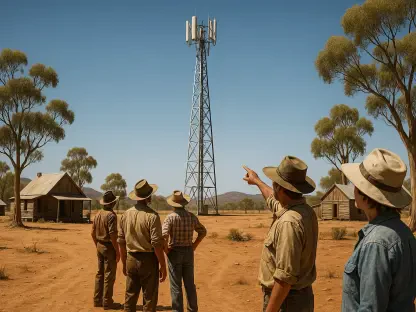The recent explosion in the number of commercial communications satellites being launched into low-Earth orbit poses significant environmental challenges that the U.S. is seemingly ill-equipped to handle. Led by companies like SpaceX’s Starlink, the satellite industry expects to see as many as 10,000 new satellites launched annually, culminating in an unprecedented 60,000 satellites floating above by 2040. This rapid increase raises alarms regarding possible ecological threats, including atmospheric pollution, the release of harmful chemicals, and potential shifts in stratospheric temperatures and ozone levels. Despite the escalating number of launches and associated challenges, regulations and oversight of the environmental impacts appear to lag behind the industry’s aggressive expansion.
Environmental Impact of Satellite Launches
Pollution from Satellite Activities
The environmental concerns associated with this satellite boom are multifaceted and primarily center around the pollution generated by frequent launches and reentries. As old satellites burn upon reentry, they release substantial amounts of metals like aluminum, lithium, and copper into the atmosphere, which can have rippling effects on climate patterns and the protective ozone layer. Launch activities themselves also emit liquefied natural gas fuels and other chemical propellants, which contribute further to atmospheric pollution. This cascade of emissions poses a formidable challenge for environmental scientists attempting to gauge their cumulative effect on global climate conditions.
The anticipated massive number of satellite launches until 2040 only underscores the urgency of addressing these environmental concerns. Furthermore, the frequency of satellites reentering the Earth’s atmosphere is likely to increase, leading to elevated amounts of debris and pollutants infiltrating the stratosphere, potentially affecting atmospheric dynamics. The lack of integrated atmospheric pollution controls in the satellite licensing process represents a critical oversight in current regulatory frameworks. As these environmental issues remain inadequately addressed, a pressing need for more stringent controls becomes evident.
Collision Risks and Oversight Gaps
With the rapid expansion of satellites in low-Earth orbit comes another significant threat in the form of collision risks. Experts estimate the likelihood of up to 150,000 near-misses annually, a statistic that illuminates the growing risk of catastrophic collisions that could exacerbate the space debris problem. This burgeoning threat requires comprehensive monitoring and effective regulatory measures to mitigate potential dangers. However, current oversight mechanisms appear ill-prepared to manage these increased risks, with atmospheric pollution and collision risk controls notably absent from the licensing processes.
PEER Executive Director Tim Whitehouse emphasizes the need for a robust response through interagency and international cooperation. This call to action highlights the concerning reality that the U.S. appears to retract from established climate science initiatives while simultaneously weakening agencies charged with monitoring environmental impacts. Organizations such as NASA, NOAA, and the National Science Foundation, which have historically played a vital role in environmental oversight and regulation, face diminishing capacities. Without substantial advancements in oversight, the risks posed by burgeoning satellite numbers could lead to dire consequences for the environment.
The Imbalanced Dynamics of Industry and Regulation
Commercial Influence on Regulatory Frameworks
The rise of commercial satellite activities driven by industry giants such as Elon Musk’s Starlink and SpaceX reveals a striking imbalance between those spearheading the technological advancements and those responsible for regulatory oversight. The potential dominance of these players in upcoming satellite initiatives further accentuates the widening gap between commercial ambitions and regulatory measures. As companies increasingly influence satellite launches, concerns over reduced environmental oversight emerge as a focal point of contention. This uneven dynamic poses significant challenges for regulators attempting to balance industry innovation with ecological preservation.
PEER’s ongoing efforts to scrutinize Musk’s involvement through federal and international channels underscore the significance of the industry’s unchecked progression. By advocating for greater scientific examination and intergovernmental regulatory collaboration, stakeholders aim to realign policy with the evolving technological landscape. Without heightened scrutiny and cooperation at international levels, those poised to profit from satellite proliferation may face minimal constraints, jeopardizing environmental safety and sustainability.
Urgency for Enhanced Scientific Scrutiny
This call to prioritize enhanced scientific scrutiny over satellite activities reflects a growing urgency to address significant atmospheric impacts amidst waning regulatory infrastructures. Increasingly, experts advocate for enriched international collaborations where environmental implications of satellite proliferation can be thoroughly examined and addressed. These cooperative efforts could facilitate better regulatory frameworks capable of mitigating potential environmental risks, ideally forestalling the severe ecological consequences currently anticipated.
Efforts to reconcile the industry’s rapid expansion with environmental sustainability necessitate a renewed focus on regulatory reforms and interagency cooperation. As the satellite boom continues, its environmental footprint becomes progressively prominent. The future trajectory of commercial satellite activities will be shaped by the balance struck between economic endeavors and the planet’s ecological well-being. By fostering collaborative responses, both weaknesses in oversight and the environmental risks associated with satellite proliferation might be effectively addressed.
Conclusion: Navigating Future Challenges
The satellite boom brings many environmental concerns, primarily linked to pollution from frequent launches and reentries. As older satellites reenter Earth’s atmosphere, they burn up and release metals like aluminum, lithium, and copper, affecting climate patterns and the ozone layer. Launches also emit liquefied natural gas fuels and chemical propellants, adding to atmospheric pollution. These emissions present significant challenges for scientists trying to understand their impact on global climate conditions.
With the predicted increase in satellite launches until 2040, these environmental concerns must be urgently addressed. More frequent satellite reentries mean more debris and pollutants in the stratosphere, altering atmospheric dynamics. Unfortunately, current satellite licensing processes overlook atmospheric pollution controls, revealing critical gaps in regulations. As these ecological issues persist without adequate solutions, there is a clear necessity for stricter environmental controls to protect our atmosphere and climate from further harm.
